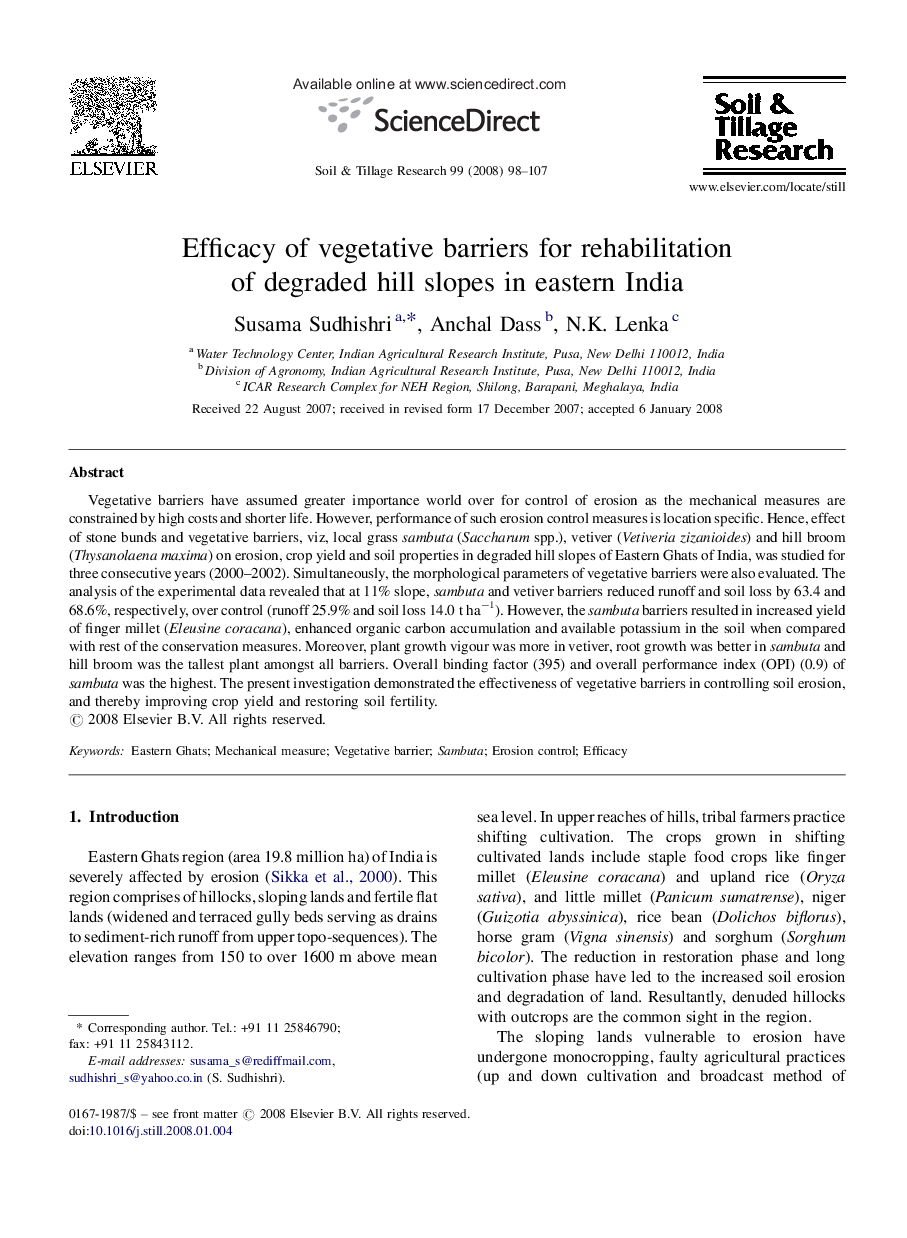| کد مقاله | کد نشریه | سال انتشار | مقاله انگلیسی | نسخه تمام متن |
|---|---|---|---|---|
| 306602 | 513104 | 2008 | 10 صفحه PDF | دانلود رایگان |

Vegetative barriers have assumed greater importance world over for control of erosion as the mechanical measures are constrained by high costs and shorter life. However, performance of such erosion control measures is location specific. Hence, effect of stone bunds and vegetative barriers, viz, local grass sambuta (Saccharum spp.), vetiver (Vetiveria zizanioides) and hill broom (Thysanolaena maxima) on erosion, crop yield and soil properties in degraded hill slopes of Eastern Ghats of India, was studied for three consecutive years (2000–2002). Simultaneously, the morphological parameters of vegetative barriers were also evaluated. The analysis of the experimental data revealed that at 11% slope, sambuta and vetiver barriers reduced runoff and soil loss by 63.4 and 68.6%, respectively, over control (runoff 25.9% and soil loss 14.0 t ha−1). However, the sambuta barriers resulted in increased yield of finger millet (Eleusine coracana), enhanced organic carbon accumulation and available potassium in the soil when compared with rest of the conservation measures. Moreover, plant growth vigour was more in vetiver, root growth was better in sambuta and hill broom was the tallest plant amongst all barriers. Overall binding factor (395) and overall performance index (OPI) (0.9) of sambuta was the highest. The present investigation demonstrated the effectiveness of vegetative barriers in controlling soil erosion, and thereby improving crop yield and restoring soil fertility.
Journal: Soil and Tillage Research - Volume 99, Issue 1, April 2008, Pages 98–107